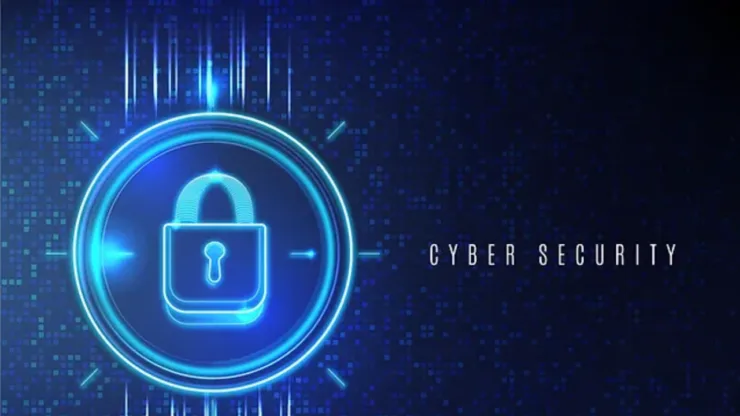In the modern world, where technology pervades every aspect of our lives, the significance of cybersecurity cannot be overstated. With interconnected systems and networks becoming increasingly vital to individuals, businesses, and governments, the challenges and risks associated with cybersecurity have grown exponentially. This article delves into the prominent cybersecurity challenges we face in the digital age, emphasizing the need for proactive measures to safeguard our digital assets effectively.
1. The Ever-Changing Landscape of Cyber Threats
The digital age has witnessed a rapid evolution of cyber threats, with hackers and malicious actors constantly devising new techniques and exploiting vulnerabilities in computer systems and networks. Defending against these threats poses a significant challenge for individuals, organizations, and governments, demanding adaptability and vigilance.
2. Safeguarding Against Data Breaches and Personal Information Theft
Data breaches have emerged as a prevalent cybersecurity challenge, impacting individuals and organizations globally. Cybercriminals target sensitive information such as personal identities, financial records, and trade secrets for financial gain or malicious purposes. The consequences of a data breach can be devastating, resulting in financial loss, reputational damage, and identity theft.
3. Combatting Ransomware Attacks and Extortion
Ransomware attacks have grown increasingly sophisticated and disruptive. Malicious actors encrypt an organization’s data and demand a ransom for its release. These attacks can paralyze critical infrastructure, businesses, and even healthcare institutions, posing threats to public safety and national security.
4. Addressing Phishing and Social Engineering
Phishing attacks exploit social engineering techniques to deceive individuals into divulging sensitive information like passwords or credit card details. Deceptive emails, messages, or phone calls appear genuine, tricking unsuspecting victims into compromising their security. Phishing remains a significant cybersecurity challenge, necessitating constant vigilance and awareness.
5. Tackling Vulnerabilities in the Internet of Things (IoT)
The proliferation of IoT devices has opened new avenues for cyber threats. Many IoT devices lack robust security measures, making them vulnerable to hacking and unauthorized access. Exploited IoT devices can be weaponized to launch larger-scale attacks, disrupt critical infrastructure, or invade personal privacy.
6. Strengthening Passwords and Authentication Practices
Weak passwords and inadequate authentication mechanisms serve as significant vulnerabilities exploited by cybercriminals. Many individuals and organizations still rely on easily guessable passwords or neglect implementing multifactor authentication. Strengthening password policies and promoting secure authentication practices are crucial steps to mitigate this challenge.
7. Mitigating Insider Threats
Insider threats arise when employees, contractors, or partners within an organization misuse their access privileges. Whether through negligence or malicious intent, insiders can cause significant harm by leaking sensitive information, stealing intellectual property, or disrupting systems from within.
8. Embracing Emerging Technologies with Security in Mind
As emerging technologies such as artificial intelligence (AI), blockchain, and quantum computing gain prominence, they bring forth new security concerns. While these technologies offer exciting opportunities, they also introduce novel attack vectors, necessitating robust security measures to prevent exploitation.
9. Cultivating Cybersecurity Awareness and Education
Despite the escalating cybersecurity threats, a lack of awareness and education persists among individuals and organizations. Many people fail to grasp the risks associated with their online activities or lack the knowledge required to adequately protect themselves. Enhancing cybersecurity awareness and promoting education are essential to effectively address this challenge.
10. Meeting Regulatory Compliance and Upholding Data Privacy
The introduction of stringent data protection regulations like the General Data Protection Regulation (GDPR) and the California Consumer Privacy Act (CCPA) presents challenges for organizations in maintaining regulatory compliance and safeguarding user data. Compliance with these regulations is critical to avoid legal repercussions and ensure individuals’ privacy and trust.
11. Overcoming Cloud Security Challenges
Cloud computing offers numerous benefits but also introduces unique security challenges. Organizations must address concerns related to data breaches, misconfigurations, unauthorized access, and reliance on third-party providers. Implementing robust security measures and maintaining transparency in cloud services are vital for protecting sensitive data.
12. Securing Mobile Devices
Mobile devices have become an integral part of our daily lives, opening new avenues for cybercriminals. Mobile malware, unsecured Wi-Fi networks, and lost or stolen devices pose significant threats to personal and organizational security. Implementing mobile security best practices, including regular updates and strong authentication, is crucial in mitigating these risks.
13. Bridging the Cybersecurity Skills Gap
The increasing demand for skilled cybersecurity professionals exceeds the available supply, resulting in a global skills shortage. This shortage impedes organizations’ ability to build robust cybersecurity teams and effectively address the evolving threat landscape. Encouraging and investing in cybersecurity education and training is crucial to bridge this gap.
14. Countering Nation-State Cyberattacks
Nation-state actors engage in cyber espionage, sabotage, and warfare, posing significant challenges to national security. These sophisticated attacks target critical infrastructure, government agencies, and businesses, aiming to disrupt operations, steal sensitive information, or gain strategic advantages. International cooperation and robust defense mechanisms are vital in countering nation-state cyber threats.
15. Embracing the Future of Cybersecurity
As technology continues to advance, so will the cybersecurity challenges we face. The future of cybersecurity demands constant innovation, collaboration, and adaptability to effectively protect our digital assets. Embracing emerging technologies, nurturing cybersecurity talent, and prioritizing proactive security measures will be paramount in the ongoing battle against cyber threats.
Conclusion
In the digital era, cybersecurity challenges are ubiquitous and continuously evolving. From data breaches and ransomware attacks to weak passwords and security concerns surrounding emerging technologies, the risks are diverse and intricate. Addressing these challenges requires a proactive and comprehensive approach that encompasses technological advancements, robust policies, user education, and collaboration among individuals, organizations, and governments. By maintaining vigilance and implementing holistic cybersecurity strategies, we can securely navigate the digital landscape.
Frequently Asked Questions (FAQs)
Q: What are the most prevalent cyber threats in the digital age?
A: The most common cyber threats include data breaches, ransomware attacks, phishing, and IoT vulnerabilities.
Q: Why is cybersecurity awareness crucial?
A: Cybersecurity awareness is of utmost importance as it educates individuals about the risks, best practices, and preventive measures required to protect themselves and their digital assets.
Q: How can organizations address the cybersecurity skills shortage?
A: Organizations can address the cybersecurity skills shortage by investing in training programs, collaborating with educational institutions, and promoting cybersecurity as a viable career path.
Q: What role do individuals play in ensuring cybersecurity?
A: Individuals play a critical role in ensuring cybersecurity by practicing good password hygiene, remaining vigilant against phishing attempts, and staying informed about the latest threats.
Q: How can emerging technologies contribute to cybersecurity?
A: Emerging technologies like AI and blockchain can enhance cybersecurity by automating threat detection, improving authentication mechanisms, and securing digital transactions.









Add comment